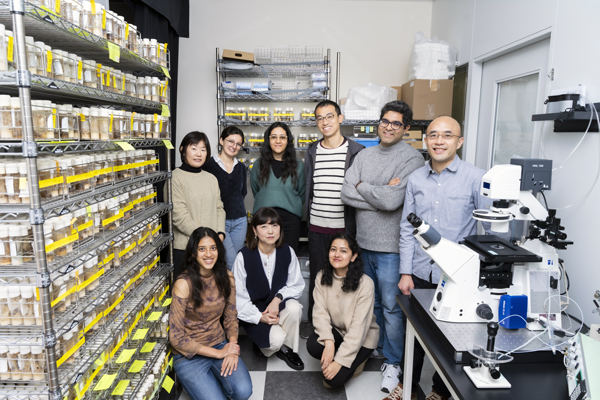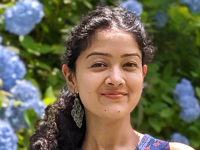Mar. 27, 2025
The mechanics of early development
Bipasha Dey, Postdoctoral Researcher
Please describe your role at RIKEN.
I am a postdoctoral researcher studying the mechanics of tissue folding during embryonic development using fruit fly embryos. I am interested in studying the mechanical properties of tissues, which is what enables them to form intricate structures and organ systems during development. This includes identifying the molecular processes that generate and regulate mechanical changes in the tissues, as well as measuring the rigidity or compliance of tissues. We have recently discovered that transient tissue folding can help relieve the mechanical tension that builds up when many movements occur at the same time during embryonic development.
How did you become interested in your current research?
I have always been thrilled by watching live imaging movies of early embryonic development, and was drawn to study the role of physical forces in transforming simple tissues into complex and diverse structures.

What excites you the most about your current research?
The possibility that mechanical constraints act as selective pressures on evolution. I think this is an exciting idea that opens up new perspectives through which to interpret evolutionary data.
What do you think has been the most interesting recent discovery in your field?
The discovery that tissues can actively modulate their rigidity or softness during development and homeostasis is particularly fascinating. This adds a new layer of control to morphogenesis, the process of shaping a tissue or organism during development.
When did you join RIKEN?
I joined RIKEN in November 2021 during the COVID pandemic. I first met the head of my lab, Yu-Chiun Wang, at the Asia Pacific Drosophila Research Conference in India, where I was deeply inspired by his work.
While I was initially hesitant about moving to Japan, the opportunity to work in his lab, combined with RIKEN being the only place where both my husband and I could secure positions in the same city, ultimately made the decision clear.
What RIKEN technology do you use?
I mostly use two-photon imaging for visualizing structures deep within the embryo, as well as optogenetics to manipulate force generating proteins fused to light sensitive proteins.
What has been your most memorable experience at RIKEN?
The development of the BDR Launchpad, an early career researcher forum for learning the behind-the-scenes aspects of scientific research. Together with Sameer Thukral (a fellow postdoc), I am part of the Diversity Working Group, which ensures the smooth running of this initiative. The Launchpad fostered a wonderful network of early career researchers, who support and encourage one another.
Rate this article

